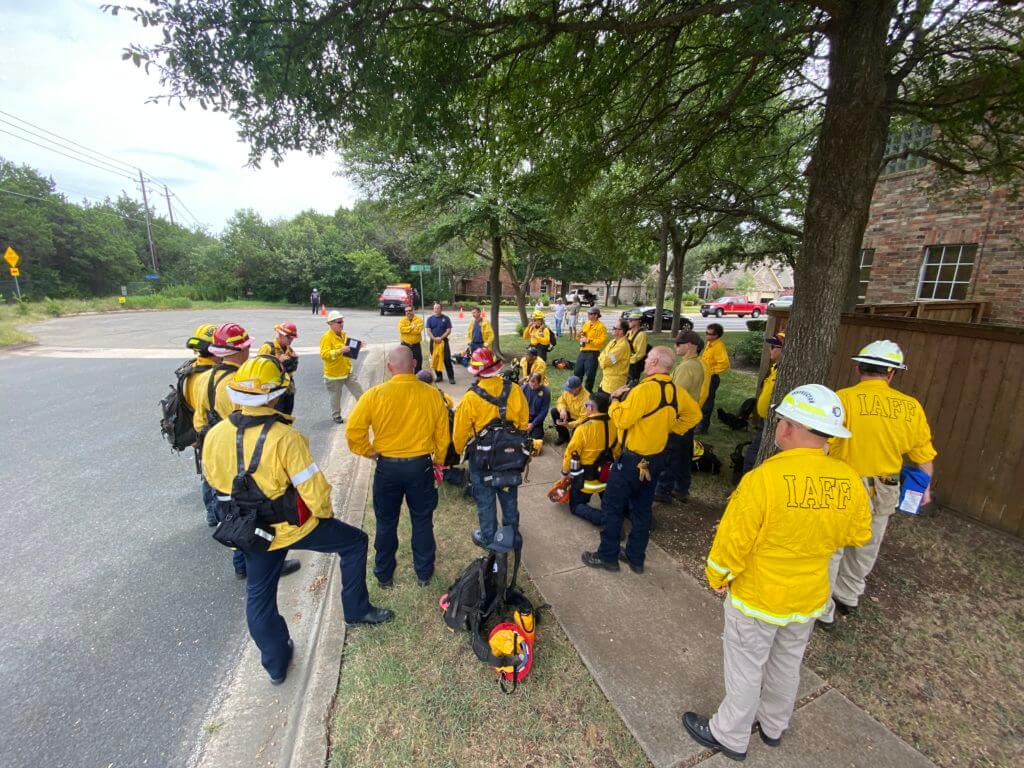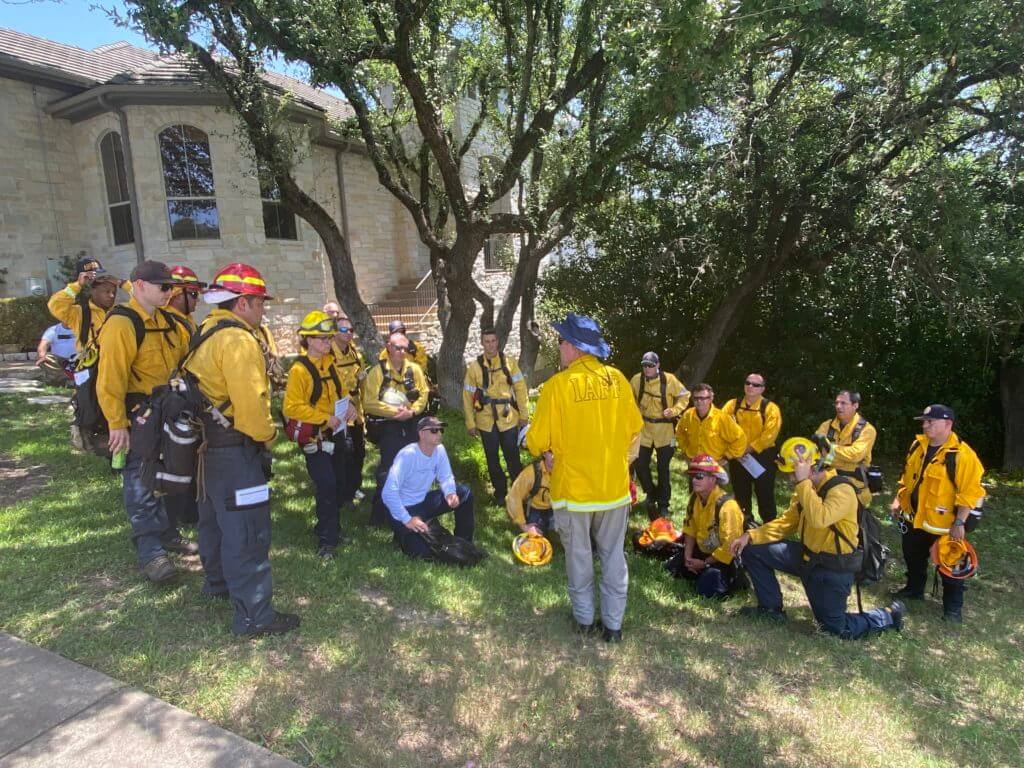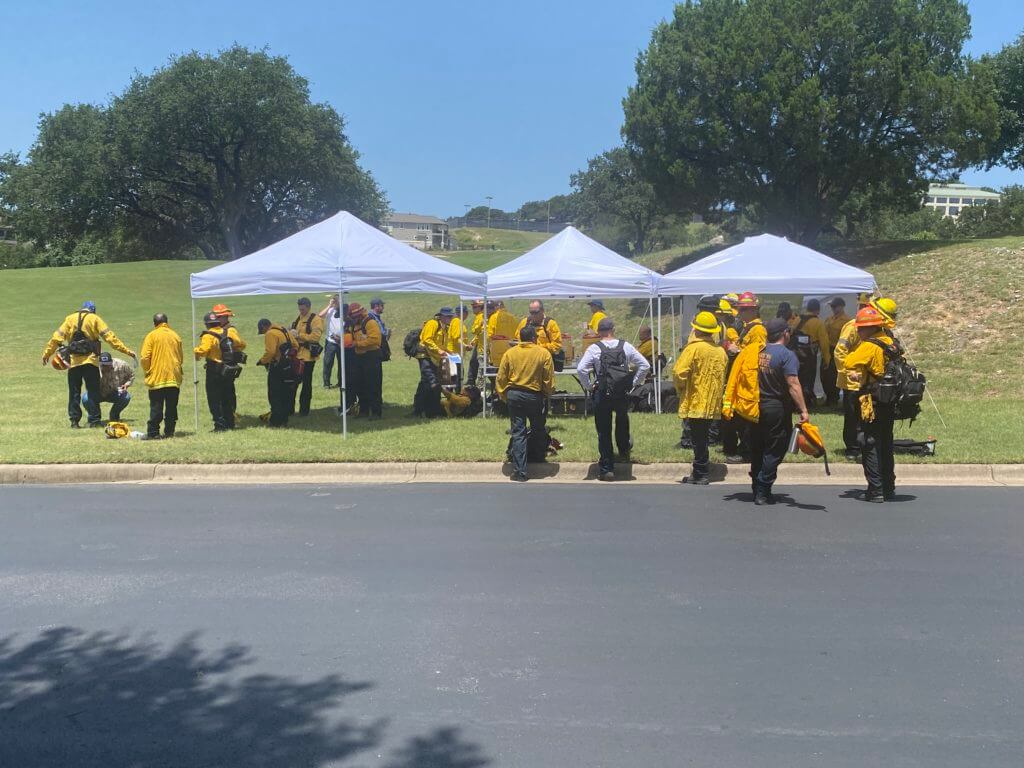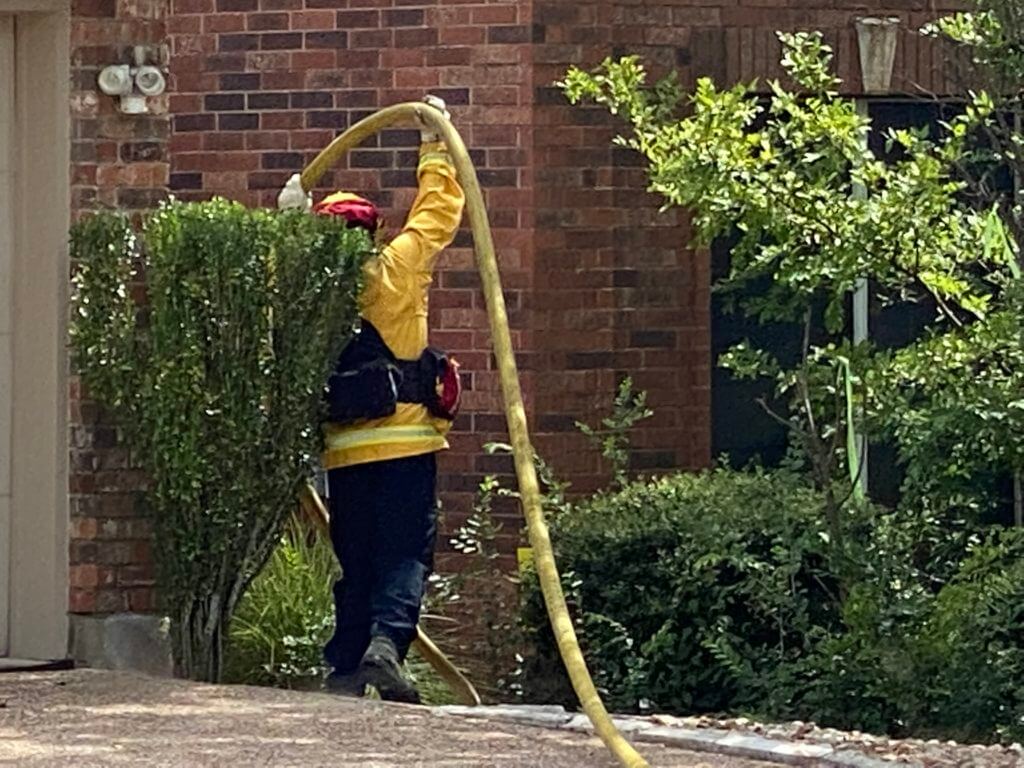

By LYNETTE HAALAND, Four Points News
The city of Austin ranks fifth in the nation — and first outside of California — in populated areas having a disproportionately high number of homes at risk for wildfire. The Four Points area has some of Austin’s highest wildfire risk areas.
“It is not a matter of if the next wildfire occurs, but when,” said Randy Jamieson, director of the River Place Firewise Program, and a Firewise Ambassador for the city of Austin.
Jamieson was instrumental in organizing the first train-the-trainer program in Texas for firefighters to learn how to effectively fight and manage threatening wildfires. Last week’s training included the Austin Fire Fighters Association, the International Association of Fire Fighters, and the Austin Fire Department.
Twenty-four AFD firefighters were trained to become trainers the last week of July to teach other AFD firefighters state-of-the-art wildfire fighting techniques. This is important because Austin has numerous wildland urban interfaces including the many green spaces around Four Points.
“This comprehensive, hands-on training program — which is the gold standard for wildfire response training nationally — was developed over a five-year period and taught by 17 wildfire experts,” Jamieson said.
The experts all have substantial boots-on-the ground experience fighting wildfires in some of the most wildfire-prone areas in North America, including California, Colorado, Washington, Arizona, Texas, Maine, and British Columbia.
“We are very fortunate to have been provided this opportunity, which was funded through a grant from the IAFF and from the AFD, to train 24 AFD trainers in wildfire response tactics,” Jamieson said.
The goal is to have all AFD firefighters trained within the next six months by the newly trained 24 trainers. Outside of this program, no AFD firefighters have been trained in the wildfire fighting techniques.
“But this will only happen if city council follows through with funding for this extremely critical initiative,” Jamieson added.
“Having well-trained and well-resourced firefighters is just one aspect of what must be a multifaceted approach to prepare at-risk areas against wildfire,” Jamieson said.
He strongly encourages that residents and business owners collaborate with experts, public officials and city staff so that the Four Points communities can develop comprehensive wildfire prevention, emergency preparedness, and evacuation plans.
Comprehensive wildfire prevention
Emergency preparedness plan
- Public education: Provide expert information to residents and businesses about sources, causes and nature of wildfire risk, along with steps to prevent and mitigate the impact of wildfires.
- Vegetation management: Determine cost-effective and environmentally-sensitive ways to fund efforts and reduce certain vegetation (wildfire fuels) in adjacent wildlands (Balcones Canyon Preserve lands) and in our communities (green spaces and homes) on an ongoing basis.
- Implementation of National Wildland Urban Interface Code: Insist that elected officials adopt the full National Wildland Urban Interface Code for the city of Austin and Travis County. The current WUI Code only applies to new construction but does not address roughly 90% of existing structures or vegetation management.
- Wildfire detection and evacuation: Implement measures that improve early wildfire detection, warning, and alerts and insist that elected officials and city manager address the existing egregious inadequacies in evacuation routes, vehicular capacity, and evacuation planning in areas at high risk of wildfire.
- Community wildfire prevention and mitigation: Identify local wildfire prevention and mitigation needs and cost-effective ways to fund them on an on-going basis.
- Defensible space: Increase and create areas of defensible space within local communities and promote home hardening principles with homeowners through the expansion of Firewise and Fire Adapted Communities initiatives including Firewise defensible space evaluations with homeowners.
Contact Randy Jamieson (512) 800 – 5330 or randalldavidjamieson@gmail.com to learn about harden your home and property against wildfire, or if you want to get involved in the development of a Comprehensive Wildfire Prevention and Emergency Preparedness Plan for the Four Points area.
Photos by Randy Jamieson



